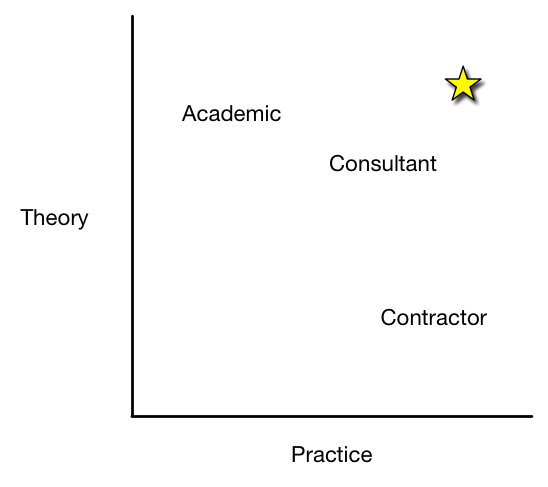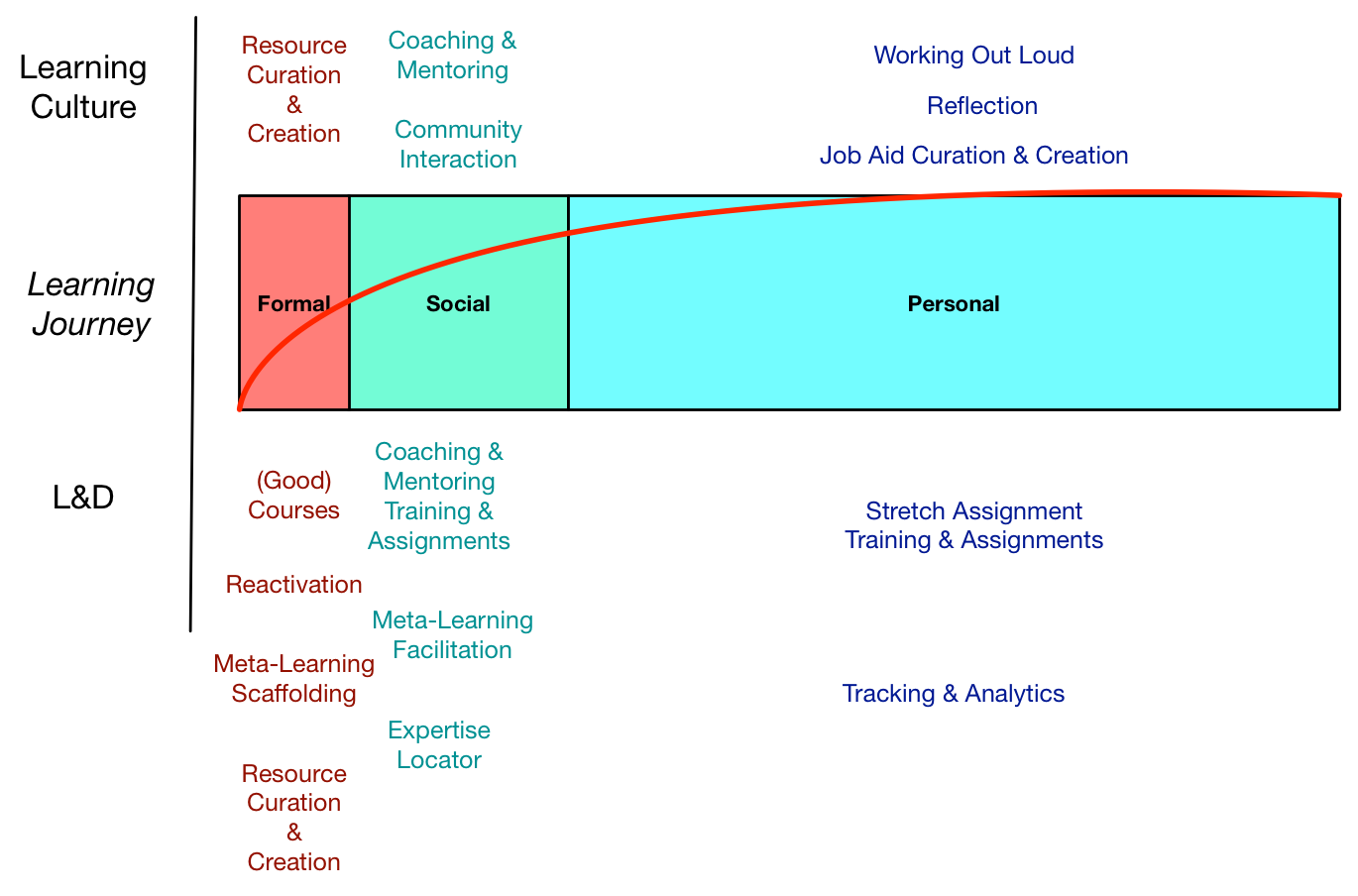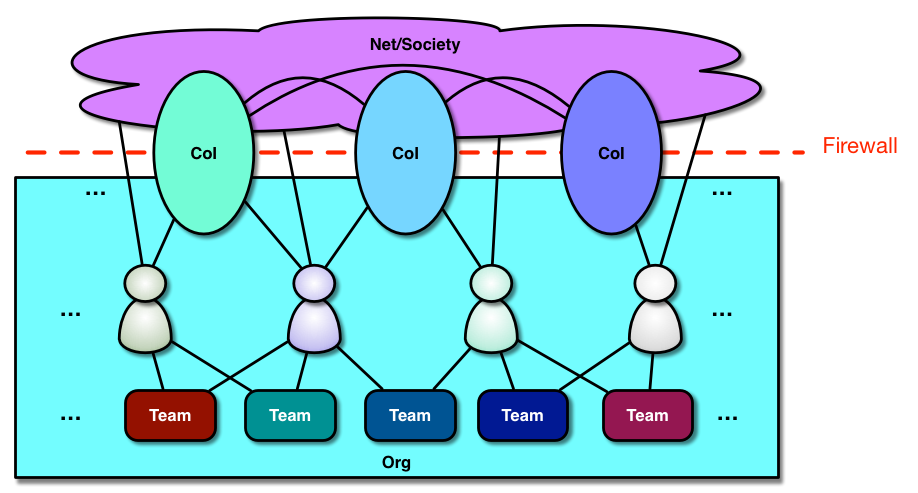I was at a retreat this weekend, consorting with colleagues. And one of the persistent perceptions of me came up that I was reflecting on, and thought I’d do so ‘out loud’.
So, once consulting became my way of life, I realized I needed to get better at the bits I don’t know. I’ve got deep theory, and considerable practical experience, but I never was a ‘businessperson’. That is, I didn’t have sales experience, or marketing knowledge, and deal-making. As part of the solution, I found Robert Middleton, who is basically a consultant to help other consultants market themselves. And I paid attention to his recommendations.
One of the interesting things was a model he had that pitted your depth of information against your ability to implement. A high information person was an expert, a high implementation person was a hard worker, (low on both was a salesperson ;), and he suggested your goal was to position yourself as an ‘infoguru’, high on both.
 I was reminded of it, and realize I see it slightly differently. So I’d put someone high on the theory/information side as an academic or researcher, whether they’re in an institution or not. They know the theories behind the outcomes, and may study them, but don’t apply them . And I’d put someone who can execute against a particular model as a contractor. You know what you want done, and you hire someone to do it.
I was reminded of it, and realize I see it slightly differently. So I’d put someone high on the theory/information side as an academic or researcher, whether they’re in an institution or not. They know the theories behind the outcomes, and may study them, but don’t apply them . And I’d put someone who can execute against a particular model as a contractor. You know what you want done, and you hire someone to do it.
Then I see consultants in general as those who go beyond contracting to doing analysis up front, and sorting between models to determine which are relevant, and then assist the client to act. And I definitely lump myself in that category, having a very large set of models I draw upon, and lots of experience applying them or developing new ones to help meet real needs. Creative, yet practical solutions. Reliably.
However…
I was chatting with some colleagues, and their feedback was that while I was perceived highly on the idea side, I didn’t position myself on the expertise side as well. And it’s true that I talk ideas, models largely, because they are the frameworks that give you traction to solve problems. And, of course, more solutions will occur if people have models to use. I naively believed that showing I knew the models would help assure people that I can assist. And so, while I develop new and/or useful ones to help frame things so they can be solved, perhaps I don’t help make clear enough that I also work with people to figure out what models make sense to take them forward.
I don’t talk enough about the projects I’ve worked on, nor the results I’ve had. Sometimes it’s because of confidentiality (you don’t want me talking about your secrets, either). And it can be hard to talk quantitatively, because too seldom does L&D actually measure what they do, but I’ve helped folks with game design, mobile strategy, learning process improvement, L&D revolution, and more. Heck, I had a really good track record while I was an academic for doing interesting projects developing learning and performance solutions. And so far, I’ve been feeding the family for 15 years now as a consultant, so I reckon I’m doing something right ;).
Still, I’ll try to do a bit better in linking the two, because I don’t want you to think what I natter on here isn’t directly applicable to improving what you do. I’ve revamped my website a bit, talking about helping at the learning design or strategy level (feedback appreciated).
You’re welcome to attempt improvements on your own, but if you want assistance in making the move faster with fewer hiccups along the way, I have been assisting folks for a long time now, and would welcome doing it with you. Whether it’s vendors finally wanting to address better learning design, or organizations looking to go beyond the ordinary, I’m here to help. This is what I do! I find it really rewarding to work with folks and collaboratively generating great outcomes, and I’m looking for more opportunities to assist. So a question for you: am I missing something in helping folks see how I can help them?

